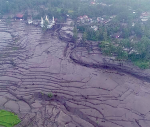You are here
The global hunger crisis is here
May 22,2022 - Last updated at May 22,2022
DUBAI — Global food prices are soaring. The United Nations Food and Agriculture Organisation’s Food Price Index, which covers a basket of basic food commodities (cereals, meat, dairy, vegetable oils, and sugar), reached an all-time high of 159.7 in March, up from 141.1 the previous month. While it declined slightly in April, to 158.5, ongoing developments, not least Russia’s war in Ukraine, are set to keep driving prices to new highs, with devastating implications for global hunger.
The COVID-19 pandemic exposed the fragility and dysfunctionality of the world’s food systems, with movement restrictions and supply-chain disruptions driving up prices, damaging rural livelihoods, and exacerbating food insecurity, especially for the poor. Now, the war in Ukraine is compounding these challenges, because both sides are major exporters of food, fuel, and fertiliser.
Moreover, climate change poses an even larger threat to global food security. Already, extreme weather like heatwaves, floods, and prolonged droughts has triggered shocks to agricultural production and food availability. As temperatures rise, these shocks will become increasingly frequent and powerful. If global warming crosses the 1.5°C threshold (relative to Earth’s pre-industrial temperature), they are likely to become catastrophic.
As the latest Intergovernmental Panel on Climate Change report shows, avoiding the threshold will require immediate and drastic action. But mitigation is only part of the challenge. Large-scale investments in adaptation will also be needed to protect vulnerable communities from the warming that is already locked in.
Even under the most optimistic mitigation scenario, global warming is expected to hit the 1.5°C threshold in a decade, before receding. This will result in shifts in climatic zones, rising sea levels, and disruptions to the water cycle that increase the frequency and intensity of extreme weather. Beyond raising economic and health risks, the resulting disruptions to food and water supplies are likely to drive social and political upheaval, fueling a vicious cycle of poverty, hunger, instability, and even conflict, accompanied by sharp rise in migration.
A more resilient, sustainable and equitable food system must be a pillar of any climate mitigation or adaptation agenda. But the barriers to building such a system should not be underestimated, especially for countries and regions where soil is poor, land has little agricultural value, other natural resources, such as water, are limited or degraded, and socioeconomic conditions are difficult.
Given the low productivity of their agricultural land, such marginal environments are unable to support the sustainable production of sufficient food to meet local people’s nutritional needs. In fact, while marginal environments are home to less than 25 per cent, of the global population, an estimated 1.7 billion people, they account for 70 per cent, of the world’s poor and most of its malnourished.
Poverty and hunger can lead farmers to overuse fragile environmental resources in order to ensure their short-term survival, even at the cost of long-term depletion of their lands and impoverishment of their households and communities. Those living in remote areas with minimal infrastructure, few alternative economic opportunities, and limited market access are particularly likely to make such choices.
Given this, countries with significant marginal lands rely on food imports, in some cases for more than 80 per cent of their needs. But pandemic- and war-related disruptions, together with the price increases they have fueled, have shown just how vulnerable such countries are. According to the FAO’s State of Food and Agriculture 2021 report, an additional 161 million people were affected by hunger in 2020, compared with 2019. And the World Food Programme is now cautioning that the combination of conflict, COVID, the climate crisis, and rising costs has pushed 44 million people in 38 countries to the edge of famine.
With countries struggling to secure enough food to meet their populations’ nutritional needs, many are now reevaluating their food dependencies and seeking to expand local production. But unless sustainability is taken into account, efforts to increase short-term resilience by shortening supply chains could undermine medium-and long-term resilience by further depleting agricultural resources like soil and water.
Sustainability isn’t cheap. Efficient production amid biophysical and climate constraints requires investment in costly technologies. But poor governance structures, limited growth prospects, and high debts pose major challenges for many countries. The pandemic has placed massive strain on public budgets, and debt crises loom for many governments, as loans taken out to address the pandemic come due.
Poor and vulnerable countries cannot be expected to address the myriad interconnected challenges they face, from pollution and biodiversity loss to hunger and poverty, without help. To bolster long-term food and nutritional security, we must look beyond country-level solutions to regional and international ones that consider the needs of communities living in marginal environments. Otherwise, there will be no escaping destabilising cycles of hunger, migration, and violence.
Seta Tutundjian, founder and CEO of Thriving Solutions, is a member of the High-Level Expert Group to assess the need for the International Platform for Food Systems Science and a co-leader of the global Food is Never Waste initiative. Copyright: Project Syndicate, 2022. www.project-syndicate.org











